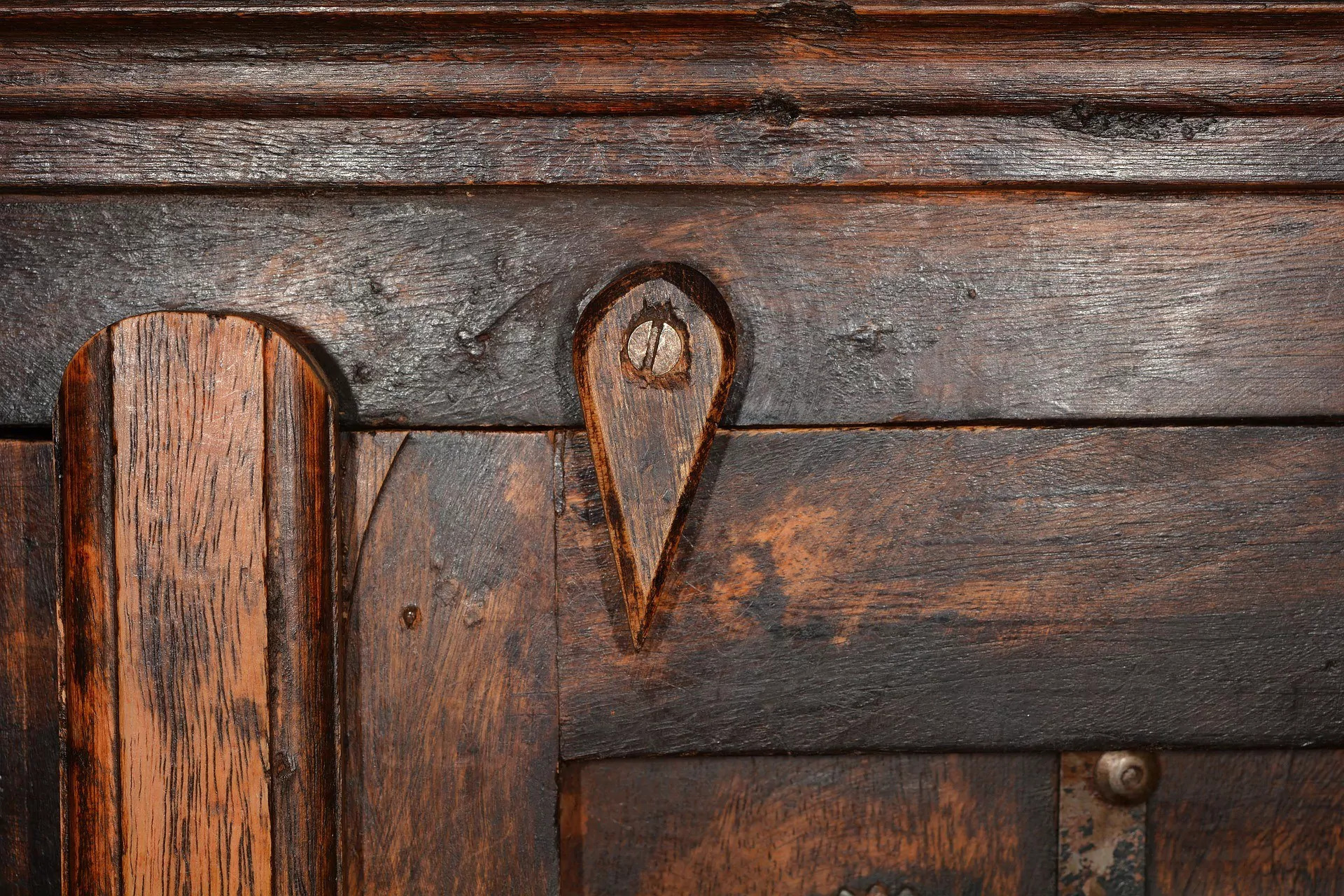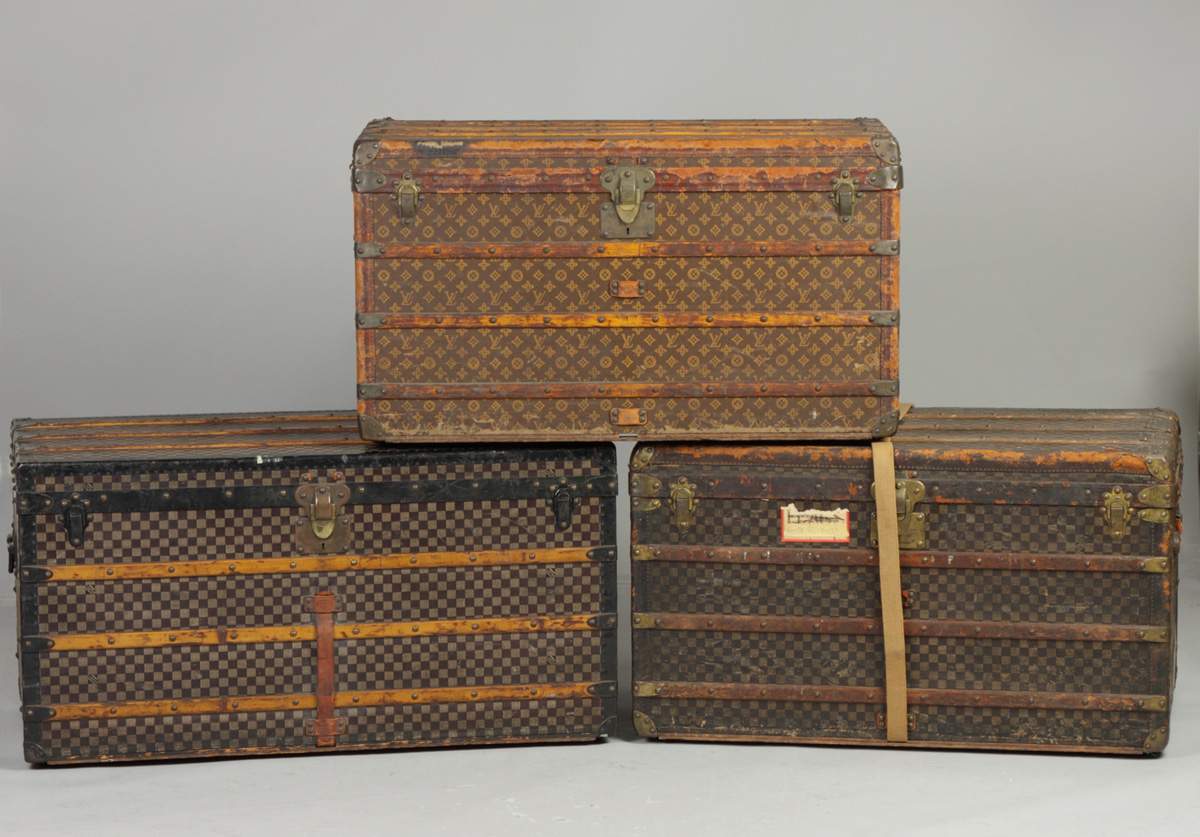

Articles
How To Date Furniture
Modified: January 6, 2024
Learn how to successfully date furniture with our comprehensive guide. From determining the age to evaluating the value, unlock the secrets of dating furniture.
(Many of the links in this article redirect to a specific reviewed product. Your purchase of these products through affiliate links helps to generate commission for Storables.com, at no extra cost. Learn more)
Introduction
Welcome to the fascinating world of furniture dating! As an avid furniture lover and history enthusiast, I understand the excitement that comes with uncovering the origins and stories behind antique pieces. Furniture has the extraordinary ability to transport us through time, connecting us to different eras and cultures. In this article, we will explore the art of dating furniture and learn how to unravel its secrets.
Understanding the age and historical context of furniture not only adds value to a piece but also allows us to appreciate its design, craftsmanship, and cultural significance. Whether you’re a collector, a homeowner looking to authenticate a piece, or simply a curious individual with a passion for the past, this guide will provide you with the tools and insights to date furniture with confidence.
So, why is dating furniture important? Beyond the thrill of unraveling its history, dating furniture helps determine its value and authenticity. It allows us to discern whether a piece is genuine or a reproduction, and whether it belongs to a specific style, period, or region. By understanding the time and context in which the furniture was created, we can gain a deeper understanding of its craftsmanship, materials, and design influences.
Let’s embark on this furniture dating journey together, exploring various methods and techniques to unveil the mysteries of its age and provenance. From researching time periods to examining style and design, evaluating construction techniques, and identifying authenticity, we will equip you with the knowledge and tools to confidently date furniture.
Before we dive into the intricacies of furniture dating, it’s important to note that while there are general guidelines and trends for different time periods, furniture can overlap in style and design elements. Additionally, alterations over the years might affect the accuracy of dating. Therefore, it’s essential to approach furniture dating with a combination of research, observation, and critical thinking.
Are you ready to embark on this journey of discovery? Let’s get started on unraveling the fascinating secrets of dating furniture!
Key Takeaways:
- Unravel the fascinating stories and historical significance of furniture by mastering the art of dating. Understand the importance of provenance, construction techniques, and style analysis to appreciate the timeless beauty of each piece.
- Dive into the world of furniture dating with confidence, armed with knowledge and resources. Embrace the thrill of uncovering the past, connecting with history, and appreciating the craftsmanship of each unique piece.
Read more: How To Store Dates
Understanding the Importance of Dating Furniture
Dating furniture goes beyond the mere act of determining its age; it is about unlocking its stories, cultural significance, and authenticity. Here are a few key reasons why dating furniture is important:
1. Historical Context:
Dating furniture allows us to place it within a specific historical context. By understanding the time period in which a piece was created, we can explore the social, political, and cultural factors that influenced its design. Whether it’s the elegant curves of the Rococo period or the simple lines of Mid-Century Modern, each style reflects the spirit of its time.
2. Value Determination:
Knowing the age of furniture is crucial when determining its value. Certain time periods or styles may be more sought after by collectors and enthusiasts, increasing the worth of a piece. Additionally, antique furniture with provenance or a direct connection to a historical event may fetch a higher price and be of greater historical significance.
3. Authenticity:
Dating furniture helps distinguish between genuine pieces and reproductions or fakes. Understanding the design, construction techniques, and materials used during a specific time period can help identify replicas. Authentic antique furniture holds not only monetary value but also the charm and history of its era.
Read more: How To Store Dates Fruit
4. Preservation and Restoration:
Dating furniture is essential for preservation and restoration efforts. By knowing the age and style of a piece, restoration experts can employ appropriate techniques, materials, and finishes to retain its authenticity and historical integrity. Incorrect restoration attempts can devalue furniture and erase critical historical information.
5. Design Inspiration:
Studying the evolution of furniture styles over time can serve as an excellent source of inspiration for contemporary design. By examining the craftsmanship, materials, and design elements of the past, furniture designers and enthusiasts can create innovative and unique pieces that pay homage to the traditions and aesthetics of bygone eras.
Understanding the importance of dating furniture sets a solid foundation for our exploration. In the following sections, we will delve into various methods and techniques that help us determine the age, style, and authenticity of furniture pieces. From researching time periods to analyzing construction techniques, we will equip you with the tools to confidently navigate the world of furniture dating.
Researching the Time Period
When it comes to dating furniture, researching the time period in which it was created is a crucial first step. Understanding the historical context and characteristics of different eras will provide valuable insights into the age and style of the piece. Here are some effective methods for researching the time period:
1. Reference Books and Catalogs:
Consulting reference books and catalogs that specialize in antique furniture can be a valuable resource. These publications often provide detailed information on different styles, designers, and time periods. Look for books that cover the specific era or region you are interested in, as they will offer in-depth knowledge and visual references.
Read more: How To Store Fresh Dates
2. Online Resources and Websites:
With the advent of the internet, access to information has become more accessible than ever. There are numerous websites and online databases dedicated to furniture history and dating. Make use of online resources such as museum websites, auction house archives, and reputable antique furniture forums. These sources often contain articles, photographs, and discussions that can assist in identifying time periods and styles.
3. Museum Visits and Exhibitions:
Museums are treasure troves of historical furniture pieces. Visit local museums with collections spanning different time periods and styles. Take note of the distinct features and characteristics exhibited in the furniture on display. Many museums also hold temporary exhibitions focused on specific eras or design movements, offering a deeper understanding of furniture dating.
4. Periodicals and Trade Journals:
Periodicals and trade journals, both historical and contemporary, can provide valuable insights into furniture styles and trends. Look for publications that cater to antique furniture collectors, restoration experts, and interior designers. These publications often include articles, photographs, and advertisements that showcase furniture from different eras.
5. Expert Consultation:
Consulting experts in the field of antique furniture dating can provide invaluable guidance. Seek out appraisers, antique dealers, or furniture historians who specialize in the era or style you are interested in. They can offer personalized insights, clarify ambiguities, and help verify the authenticity of a piece.
Remember, dating furniture requires a combination of research, observation, and critical thinking. It’s important to cross-reference information from multiple sources and be aware of possible inconsistencies or variations within a given style or time period. By investing time and effort into researching the time period, you’ll be equipped with the knowledge needed to accurately date your furniture pieces.
Read more: How To Store Dates Medjool
Examining the Style and Design
The style and design of furniture play a significant role in dating and understanding its historical context. Different periods and movements have distinct characteristics that can help identify the era in which a piece was created. Here are some key elements to consider when examining the style and design of furniture:
1. Silhouette and Proportions:
The overall shape and proportions of furniture can provide valuable clues about its time period. Pay attention to the silhouette, whether it’s the graceful curves of the Rococo period or the clean lines of the Art Deco movement. Study the dimensions and proportions of the piece, as these can vary across different eras and styles.
2. Ornamentation and Decoration:
Ornamentation and decorative details can reveal a lot about the style and period of furniture. Look for intricate carvings, scrollwork, inlays, or marquetry. These embellishments may incorporate motifs specific to certain eras or cultural influences. For example, the use of classical motifs was common during the Neoclassical period, while detailed floral patterns were popular in the Victorian era.
3. Materials and Techniques:
The materials used and construction techniques employed can provide valuable insights into the age and authenticity of furniture. Different time periods favored specific materials. For example, the use of oak was prevalent during the Gothic revival period, while mahogany became popular during the Georgian and Federal periods. Additionally, understanding traditional woodworking techniques can help determine the craftsmanship and authenticity of a piece.
Read more: How To Germinate A Date Seed
4. Details and Hardware:
Examining the details and hardware of furniture can provide valuable clues about its age and style. Look for specific types of hardware, such as drawer pulls, hinges, or decorative fittings, that were popular during a particular period. These details can be indicative of the craftsmanship and design trends of the time.
5. Influences and Design Movements:
Consider the broader design movements and influences of the era in which the furniture was created. For example, the Arts and Crafts movement emphasized simplicity and craftsmanship, while the Bauhaus movement focused on functionality and minimalism. Understanding these design movements and their influence on furniture can help determine the style and date of a piece.
When examining furniture style and design, it’s important to keep in mind that styles can evolve over time, and there may be overlap between different periods. Additionally, modifications and repairs made to furniture over the years can impact its original appearance. Therefore, it’s essential to approach style and design analysis with a combination of knowledge, observation, and critical thinking.
By carefully examining the style and design elements of furniture, you can gain valuable insights into its age, cultural influences, and historical context. This, in turn, will contribute to your ability to accurately date and appreciate the beauty of your furniture pieces.
Analyzing the Construction Techniques
The construction techniques used in furniture can offer valuable clues about its age, craftsmanship, and authenticity. Understanding these techniques and their historical context can aid in dating furniture accurately. Here are some key aspects to consider when analyzing the construction techniques of furniture:
1. Joinery:
One of the most important factors to examine is the joinery used in the construction of the piece. Different periods and regions favored specific joinery techniques. For example, the use of dovetail joints is common in older furniture, while mortise and tenon joints became prevalent during the Arts and Crafts movement. Examine the quality, precision, and type of joinery to determine the level of craftsmanship and age of the piece.
Read more: How To Date Uranium Glass
2. Hand-Crafted vs. Machine-Made:
The transition from hand-crafted to machine-made furniture is an important consideration in dating furniture. Hand-crafted pieces typically exhibit unique details and imperfections that reflect the individual craftsmanship involved. In contrast, machine-made furniture shows more uniformity and precision due to mass production techniques. Understanding the historical timeline and technological advancements can help differentiate between hand-crafted and machine-made furniture.
3. Veneer and Inlay Work:
Veneer and inlay work can provide valuable insights into the construction of furniture. Veneer is the process of applying a thin layer of decorative wood onto a solid core, while inlay involves the use of contrasting materials to create decorative patterns or designs. Different time periods favored specific veneering and inlay techniques. For example, Boulle marquetry was popular during the Baroque period, while stringing and inlay work were prominent during the Regency period.
4. Surface Treatment and Finishes:
Examining the surface treatment and finishes of furniture can help determine its age and authenticity. Different periods favored specific finishes, such as shellac in the 18th century or French polish in the Victorian era. Additionally, the patina and wear on the surface can provide valuable clues about the age and history of the piece. Look for signs of natural aging, including color changes, softening of edges, or wear patterns, which can indicate the furniture’s age.
5. Structural Elements:
The structural elements of furniture, such as the frame, legs, and support systems, can provide valuable insights into the construction techniques used. Study the design, materials, and connections used in these structural elements to determine the craftsmanship and age of the piece. For example, the use of horsehair upholstery in a chair might indicate an earlier period, while the introduction of coil springs suggests a later date.
When analyzing construction techniques, it’s important to remember that repairs, alterations, and restoration work done over the years can impact the original construction. Therefore, it’s essential to closely examine and compare different aspects of the furniture’s construction, taking into consideration its overall condition and any modifications that may have been made.
By carefully analyzing the construction techniques used in furniture, you can gain valuable insights into its age, craftsmanship, and authenticity. This, in turn, will contribute to your ability to accurately date and appreciate the uniqueness of your furniture pieces.
Read more: What To Bring On A Picnic Date
Identifying Authenticity and Provenance
When it comes to dating furniture, authenticity and provenance play a crucial role in determining the value, historical significance, and legitimacy of a piece. Here are some key steps to help you identify the authenticity and provenance of furniture:
1. Provenance Research:
Provenance refers to the history of ownership and documentation associated with a particular piece of furniture. Start by researching the provenance of the furniture, if available. Look for labels, markings, or inscriptions that provide details about the maker, previous owners, or any historical significance. Auction catalogs, antique dealer records, and family archives can be valuable sources of provenance information.
2. Maker’s Marks and Signatures:
Examine the furniture for any maker’s marks or signatures. Many furniture makers stamped or engraved their names, initials, or company marks on their pieces. These marks can provide valuable clues about the authenticity and origin of the furniture. Research the maker and their working period to match the marks with established furniture makers of the time.
3. Construction Techniques and Materials:
Authentic antique furniture often exhibits specific construction techniques and the use of particular materials that were prevalent during its time. Study the joinery, materials, and finishes to ensure they align with the style and period in question. Look for signs of hand-craftsmanship, such as irregularities, tool marks, or imperfections, which can indicate authenticity.
Read more: How To Store Dried Dates
4. Comparison with Known Examples:
Compare the furniture piece in question with known examples from the same time period, style, and region. Look for similarities in design, construction, and decorative elements. This comparative analysis can help establish the authenticity and genuineness of the piece by identifying shared characteristics and variations.
5. Expert Consultation:
When in doubt, seek the opinion of experts in antique furniture authentication. Consult reputable appraisers, furniture historians, or antique dealers who specialize in the era or style of the furniture. They can provide valuable insights, offer professional judgment, and help verify the authenticity of the piece based on their experience and expertise.
6. Scientific Analysis:
Scientific analysis can offer additional support in verifying the authenticity of furniture. Techniques such as x-ray examination, infrared imaging, or wood dating using dendrochronology can provide insights into the materials used, the construction methods, and the age of the wood. Scientific analysis is particularly helpful for verifying the age of antique pieces with no visible maker’s marks or when faced with potential replicas.
Remember, identifying authenticity and provenance requires thorough research, careful examination, and expert guidance. Be mindful of the fact that for some furniture pieces, establishing full provenance may be challenging or impossible. However, a combination of factors, including construction techniques, historical context, and expert opinion, can help you make an educated assessment of a piece’s authenticity and provenance.
By successfully identifying the authenticity and provenance of furniture, you can gain a deeper appreciation for its history, cultural significance, and value. It adds a rich layer of authenticity and enhances your understanding and enjoyment of the piece.
Evaluating Condition and Wear
Evaluating the condition and wear of furniture is essential in determining its authenticity, value, and potential restoration needs. The condition of a piece can provide insights into its age, history, and level of preservation. Here are some key factors to consider when evaluating the condition and wear of furniture:
Read more: How To Store Dry Dates
1. Structural Integrity:
Start by assessing the structural integrity of the furniture. Look for any signs of damage, such as loose joints, cracks, splits, or warping. Determine if the piece has been repaired or altered extensively, as this can affect its authenticity and value. Pay special attention to key structural elements like legs, frames, and support systems to ensure they are sturdy and intact.
2. Surface Condition:
Examine the surface of the furniture for any signs of wear, scratches, dents, or discoloration. Surface condition can provide insights into the history and use of the piece. Minor surface wear is expected on antique furniture, but excessive damage or aggressive restoration may impact its value and authenticity. Consider whether the surface finish is original, partially restored, or fully refinished.
3. Patina and Aging:
Patina refers to the natural aging and discoloration that occurs on furniture over time. Assess if the patina is consistent with the expected aging process for the time period and materials used. Look for signs of consistent wear and color changes on areas that are frequently touched or exposed to light. A well-developed and genuine patina enhances the charm and authenticity of the piece.
4. Upholstery and Fabric:
If the furniture has upholstery or fabric, evaluate its condition and authenticity. Original upholstery can provide valuable insights into the age and style of the piece. Look for any signs of wear, stains, or repairs. Consider whether the fabric is original, a later replacement, or has been reupholstered. Assess the type of stuffing materials used and the overall condition of the upholstery, as this can impact the comfort and value of the piece.
Read more: How To Do A Picnic Date
5. Hardware and Accessories:
Examine the hardware, fittings, and accessories on the furniture. Look for original or period-appropriate hardware and assess its condition. Determine if any replacements or repairs have been made, as this can impact the overall authenticity and value of the piece.
Keep in mind that evaluating condition and wear is subjective, and it’s important to strike a balance between the originality and functionality of the piece. Antique furniture will naturally show signs of wear, but excessive damage or extensive restoration can impact its value and historical integrity.
If you are unsure about evaluating the condition and wear of furniture, consider consulting experts in restoration, conservation, or antique appraisal. They can provide professional assessment, recommend appropriate restoration techniques, and guide you in preserving the authenticity and value of the piece.
By thoroughly evaluating the condition and wear of furniture, you can determine its historical significance, understand its current state, and make informed decisions regarding preservation or restoration efforts.
Utilizing Resources and ReferencesWhen it comes to dating furniture, it’s crucial to leverage the wealth of resources and references available to enrich your knowledge and understanding. These resources can provide valuable insights, aid in research, and guide you in accurately dating furniture. Here are some key resources and references to consider:
1. Books and Literature:
Books dedicated to furniture history, design, and identification are invaluable references for any furniture enthusiast. Look for reputable publications that cover specific time periods, styles, or regions of interest. These books often provide detailed information, illustrations, and comparative examples to aid in furniture dating.
2. Online Databases and Websites:
Take advantage of online databases and websites specifically dedicated to furniture identification and history. Some websites offer comprehensive catalogs, image galleries, and articles that can assist in identifying styles, makers, and time periods. Additionally, there are forums and discussion groups where you can interact with other furniture enthusiasts and seek advice.
Read more: How To Grow Date Seeds
3. Museum Collections and Archives:
Visiting or accessing museum collections and archives can provide firsthand exposure to a wide range of furniture pieces. Museums often have extensive collections that showcase different time periods and styles. They may also have research archives and resources available for public use. Take advantage of these resources to study and compare authentic examples.
4. Auction House Catalogs and Records:
Auction house catalogs and records can be valuable resources for furniture dating. These catalogs often provide detailed descriptions, measurements, and photographs of furniture pieces up for sale. Browse through past auction catalogs or research databases to learn about similar pieces or to find examples from specific time periods or styles.
5. Antique Dealer Associations and Fairs:
Antique dealer associations and fairs can serve as excellent resources for networking and obtaining expertise in furniture identification. Attend antique fairs and exhibitions where knowledgeable dealers can provide insights into different styles, time periods, and makers. Engage in conversations with experts and fellow collectors to expand your knowledge and gain new perspectives.
6. Academic Institutions and Research Papers:
Academic institutions and research papers offer scholarly insights into furniture history, design, and analysis. Explore research papers, theses, and scholarly publications related to furniture dating and specific design movements. These resources can provide in-depth analysis, historical context, and references to primary sources that contribute to accurate furniture identification.
Remember to cross-reference information from multiple sources and consider the expertise, credibility, and authority of the resources you utilize. Building a library of reliable resources and references will enhance your ability to accurately date furniture and deepen your understanding of its historical significance.
Utilizing resources and references not only supports your own research and knowledge but also allows you to actively contribute to the collective understanding of furniture history. Embrace the wealth of information available and continue to expand your expertise in this fascinating field.
Read more: How To Store Medjool Dates
Conclusion
Congratulations on completing this comprehensive guide to dating furniture! We’ve explored various techniques and resources that can help you unravel the mysteries of furniture history and authenticity. By understanding the importance of dating furniture, researching time periods, examining style and design, analyzing construction techniques, identifying authenticity and provenance, evaluating condition and wear, and utilizing resources and references, you are well-equipped to confidently date and appreciate furniture pieces.
Remember, dating furniture is not an exact science, and it requires a combination of knowledge, observation, and critical thinking. It’s important to approach the process with a level of flexibility, as styles and design elements can overlap or evolve over time. Additionally, alterations, repairs, and restoration work done over the years can impact the original appearance and construction of furniture.
When dating furniture, take your time and immerse yourself in the world of research, exploration, and comparison. Keep your curiosity alive and continue to learn and expand your understanding of different time periods, styles, and construction techniques. Embrace the thrill of uncovering the stories and historical significance behind each piece you encounter.
Whether you are a collector, homeowner, or simply someone with a passion for history and design, dating furniture adds an enriching layer of understanding and appreciation to your pieces. It allows you to connect with the past and enjoy the timeless beauty and craftsmanship of each furniture creation.
As you embark on your furniture dating journey, don’t hesitate to seek the guidance of experts, consult reliable resources, and engage with fellow enthusiasts. The knowledge and insights gained from these interactions will further enhance your expertise and contribute to your overall enjoyment of the process.
Now, armed with the knowledge and tools shared in this guide, go forth and explore the world of furniture dating. Unravel the stories, appreciate the craftsmanship, and discover the beauty of each piece as you dive into the captivating history of furniture.
Frequently Asked Questions about How To Date Furniture
Was this page helpful?
At Storables.com, we guarantee accurate and reliable information. Our content, validated by Expert Board Contributors, is crafted following stringent Editorial Policies. We're committed to providing you with well-researched, expert-backed insights for all your informational needs.





0 thoughts on “How To Date Furniture”